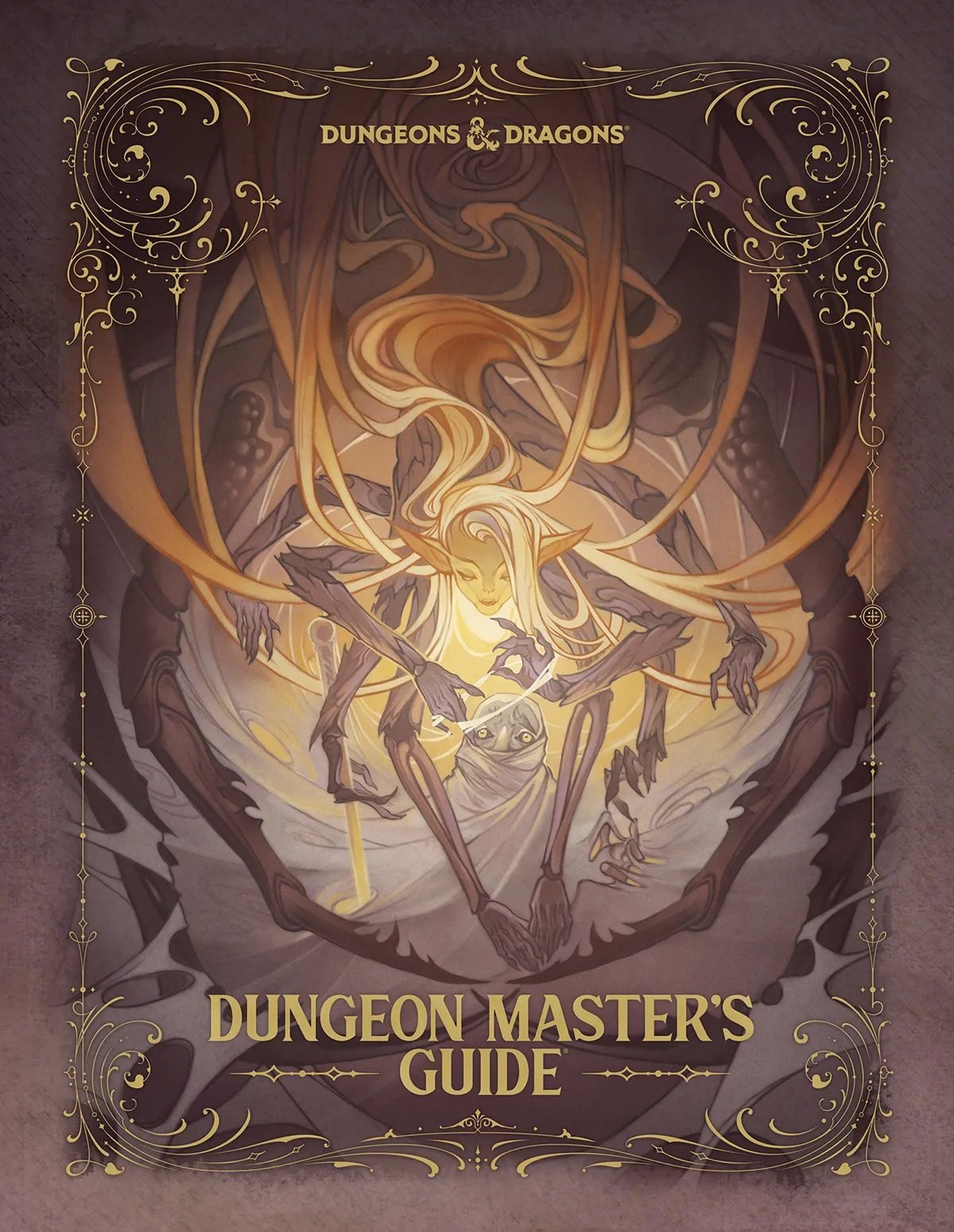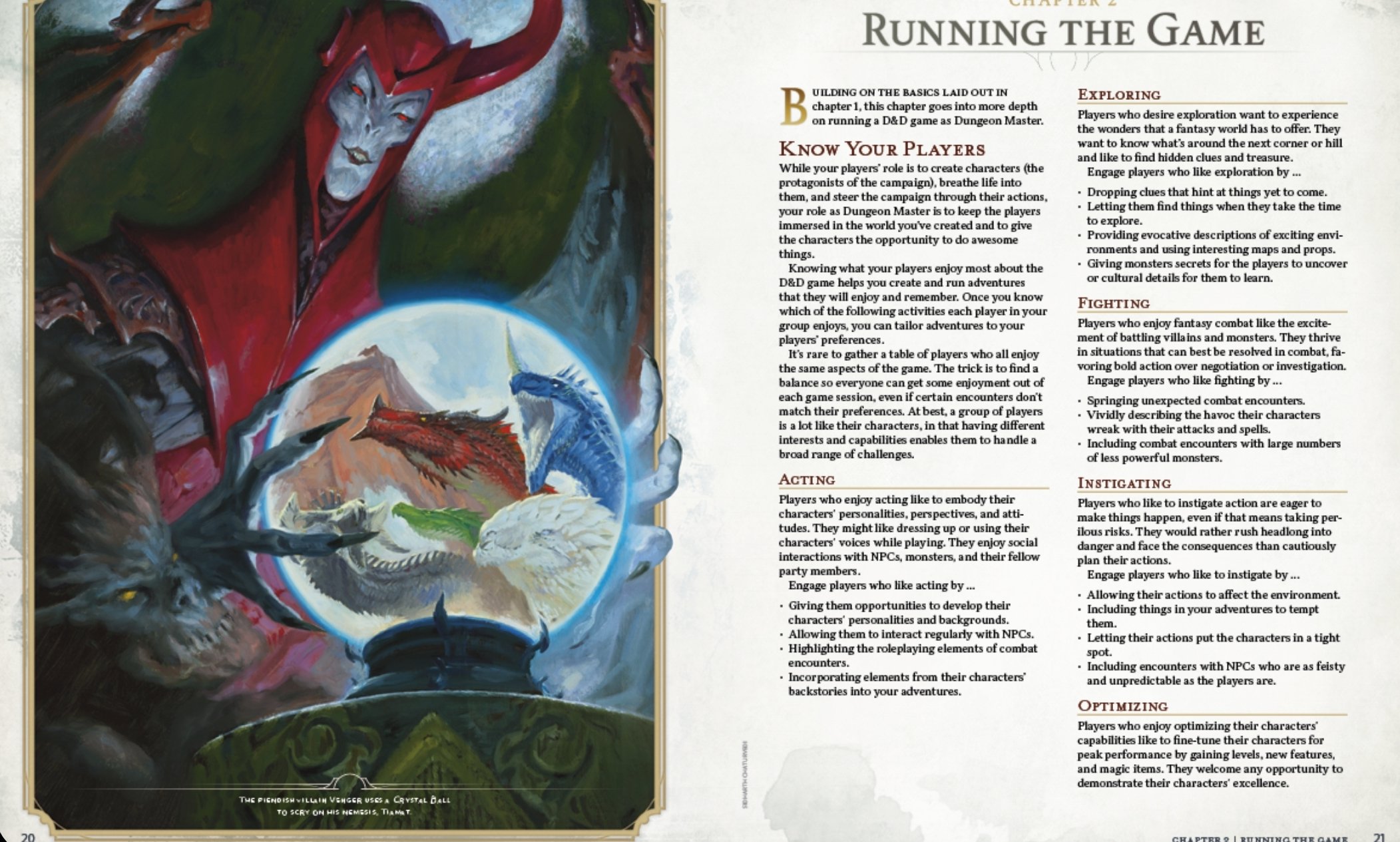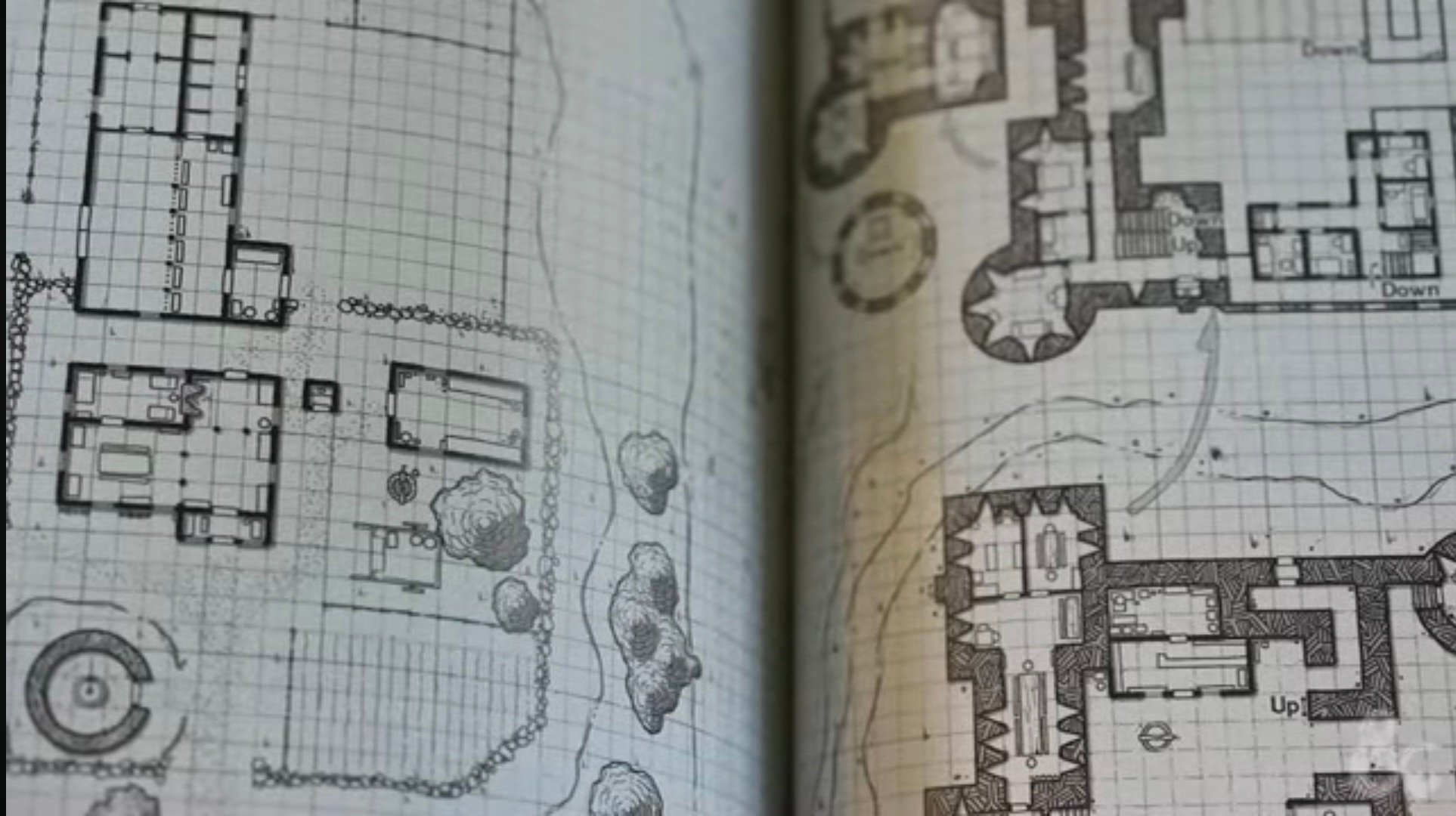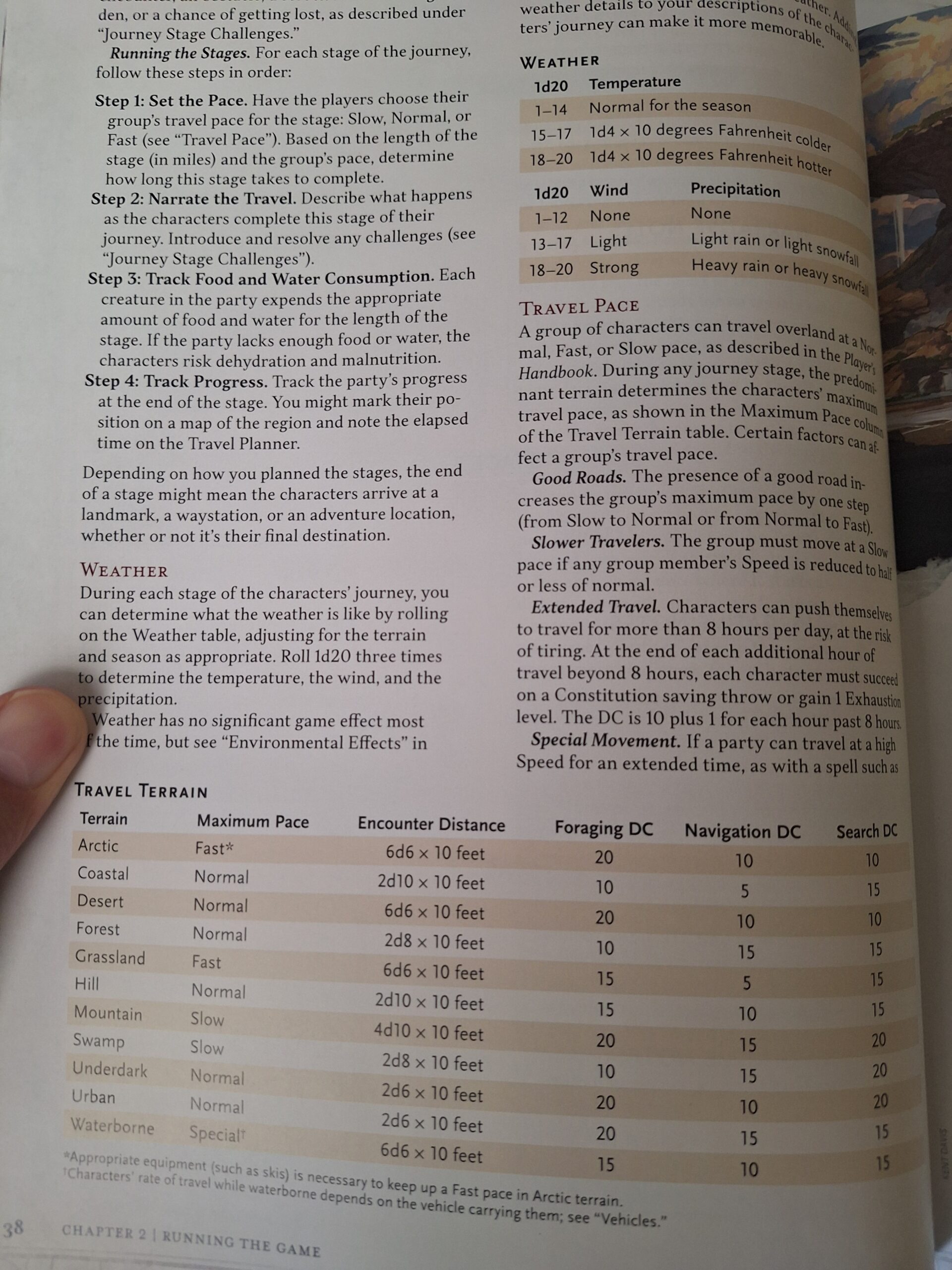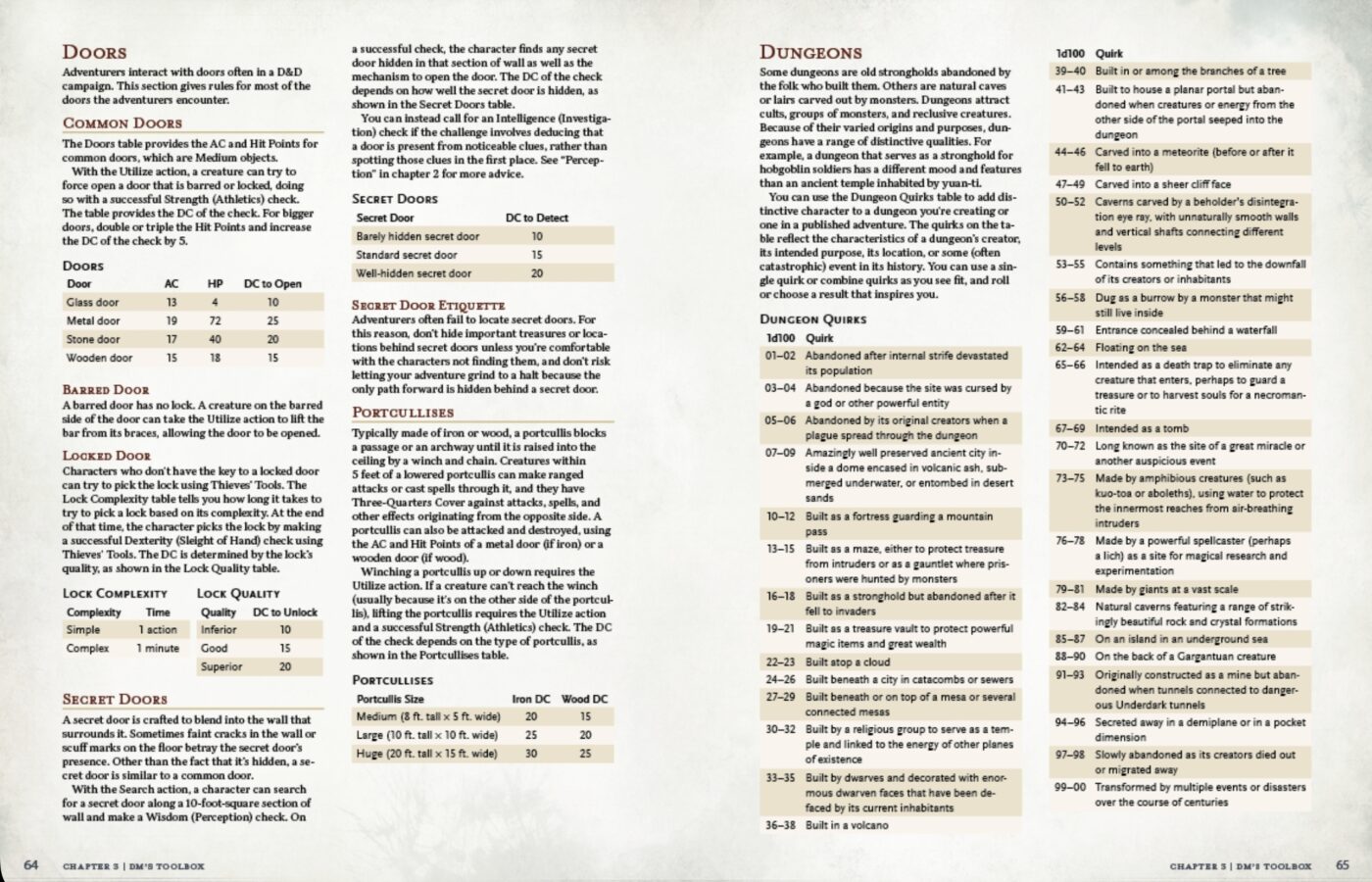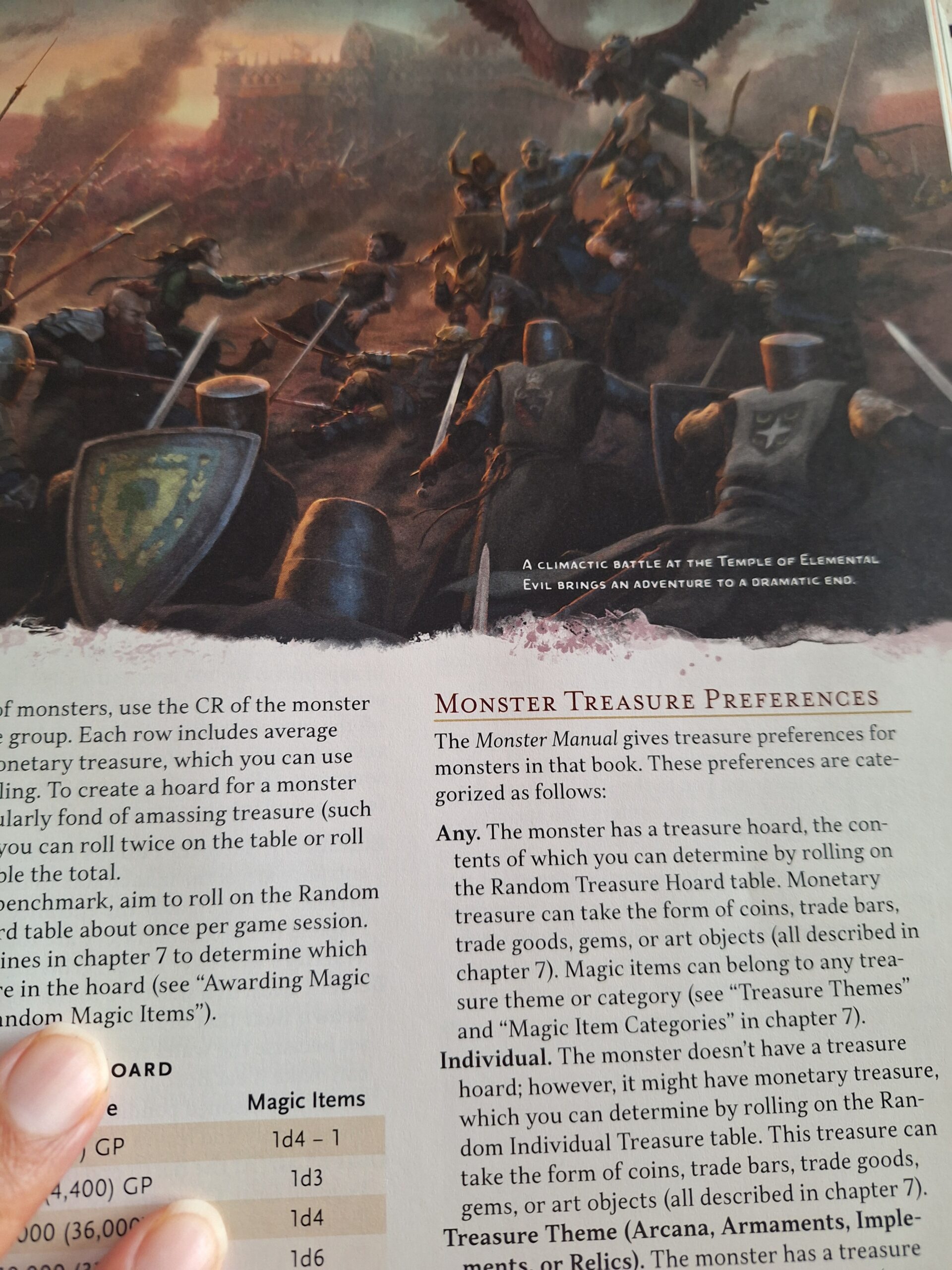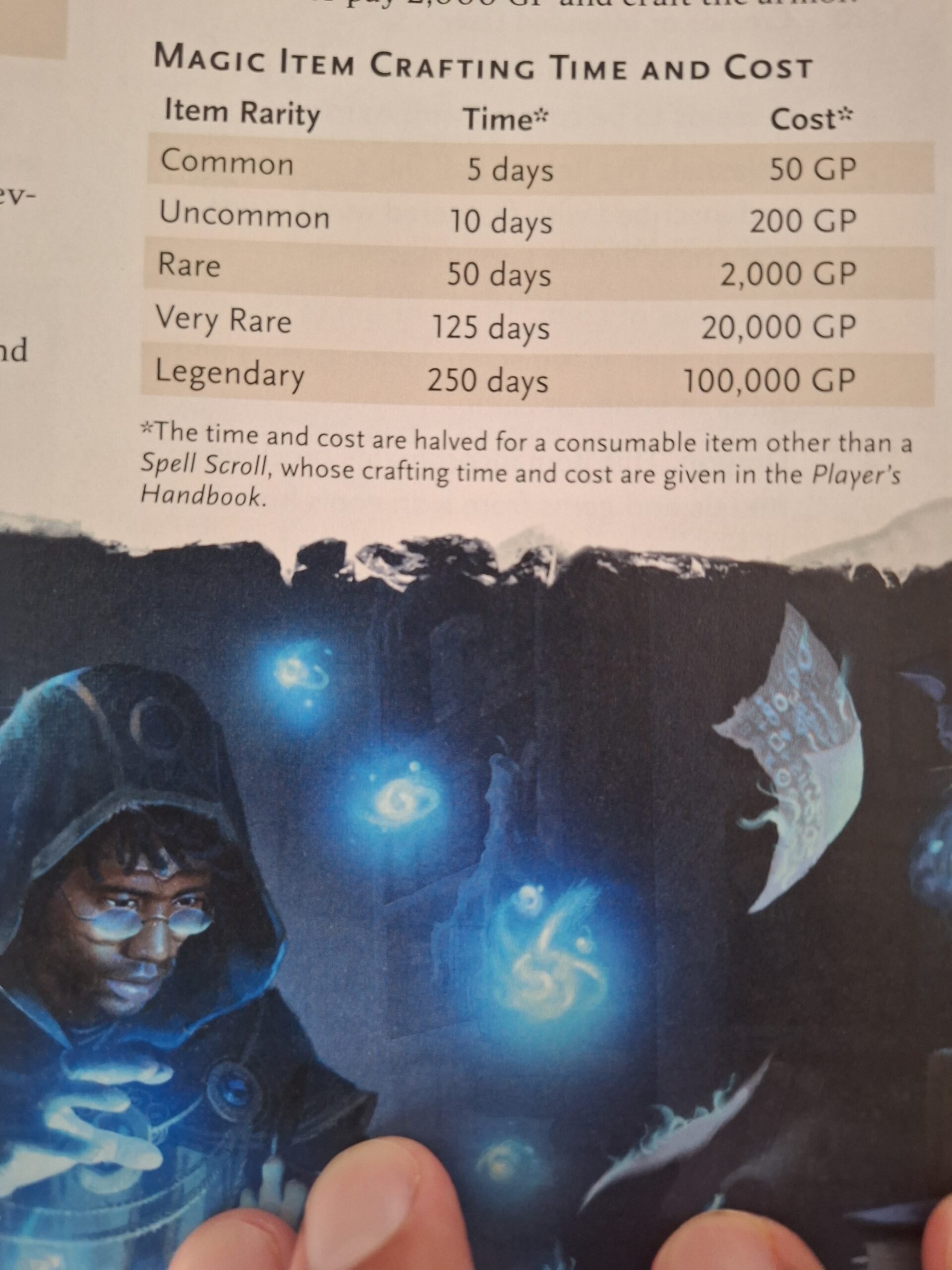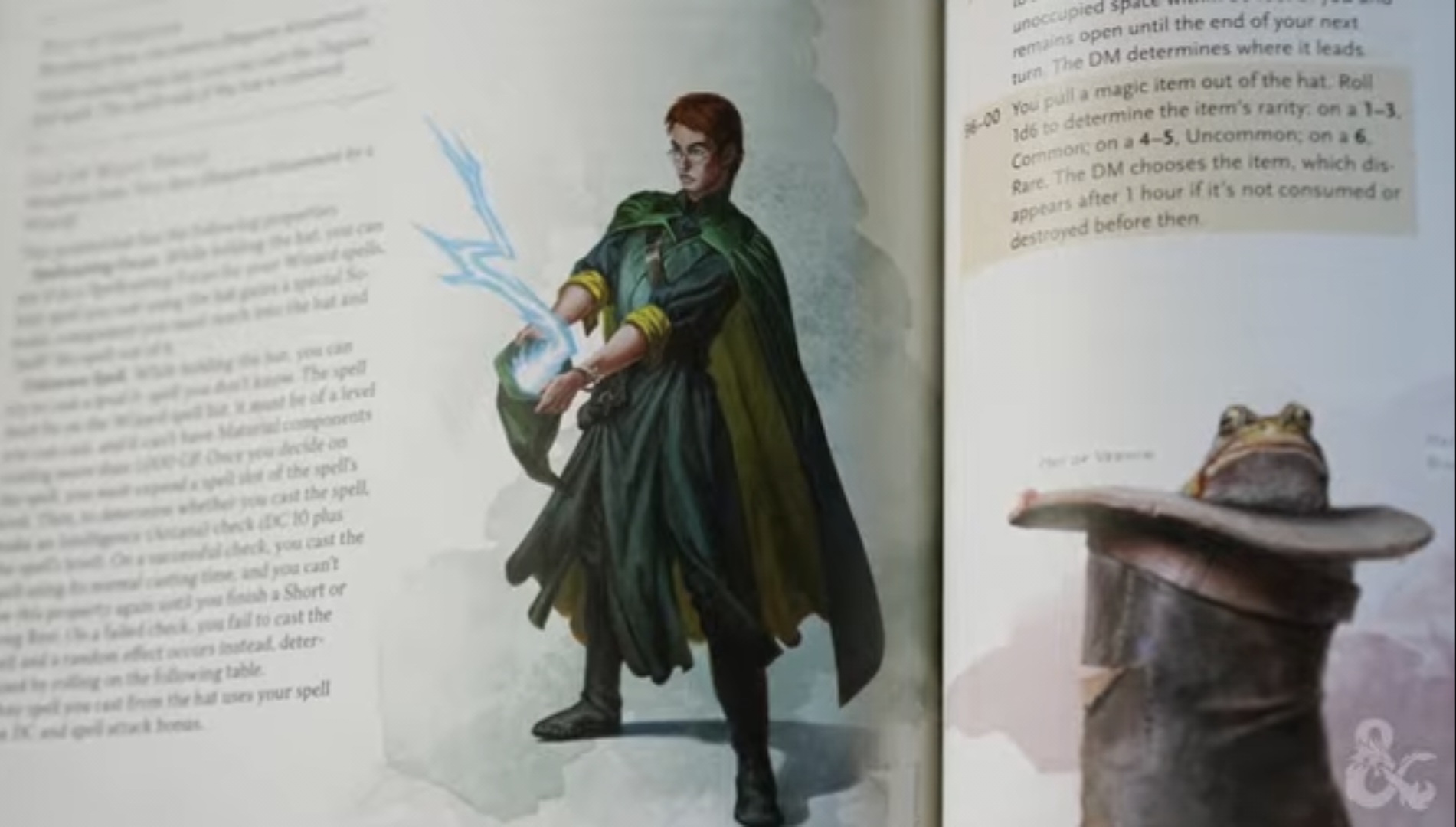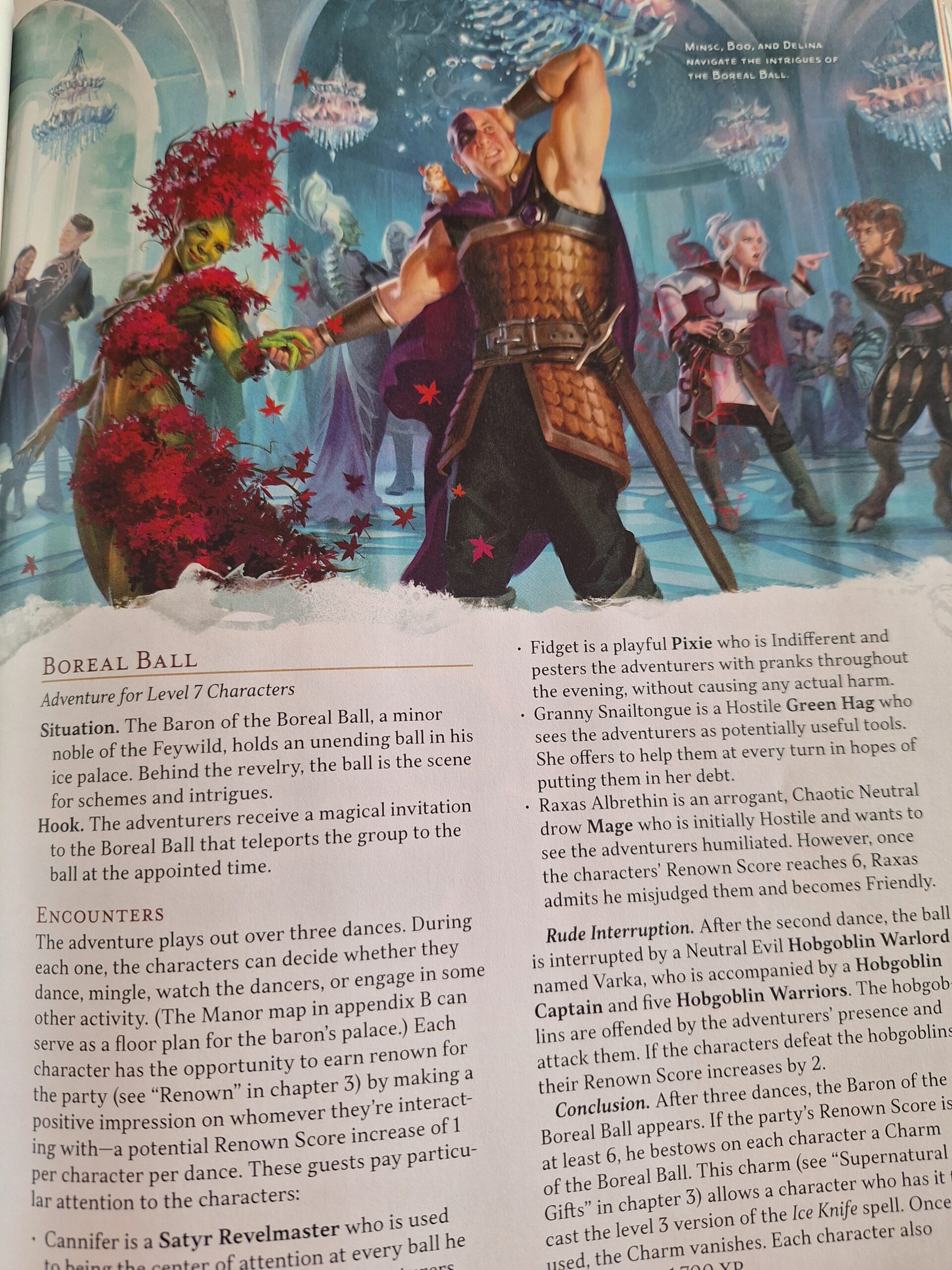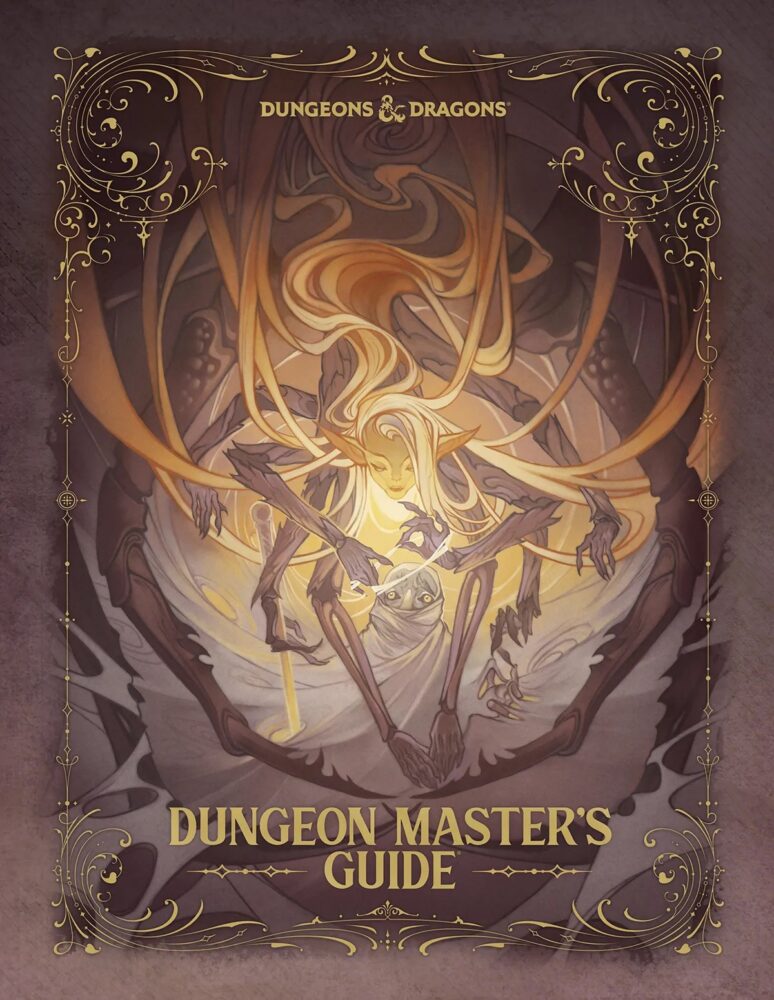D&D: The New ‘Dungeon Master’s Guide’ – First Impressions
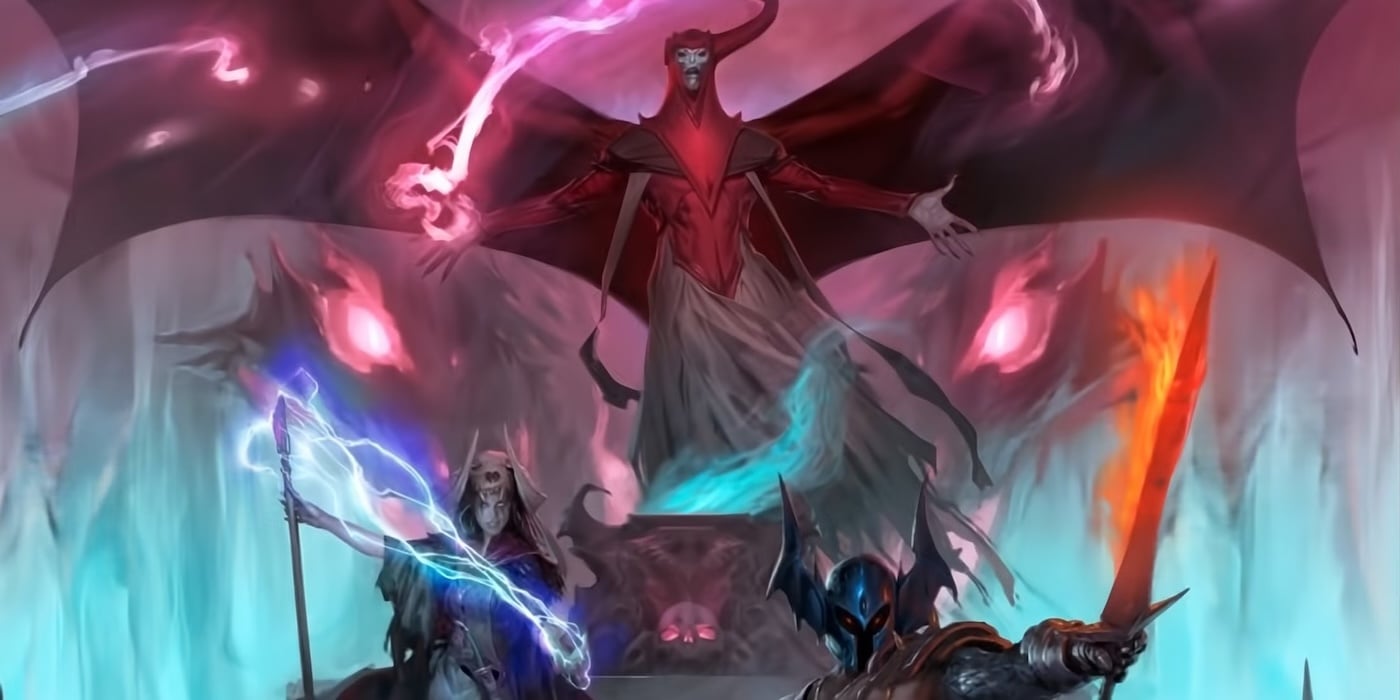
The new 5.5E Dungeon Master’s Guide was released today, giving DMs everywhere a whole new book to throw at players. How does it hold up?
One of the much-belabored “truths” of D&D is that the Dungeon Master’s Guide has to do so much work for so few. After all, most of the people playing D&D are players. You only “need” one dungeon master. Unless you want to avoid DM burnout or to have a wide variety of game styles, or whatever.
However, the fact remains that the Dungeon Master’s Guide is typically aimed at the running of the game. And often goes unremarked/unread by many, including Dungeon Masters. One of the big jokes of D&D is that the rule you were trying to invent probably already existed in the 5th Edition DMG. Just nobody read it.
The new Dungeon Master’s Guide for 5.5E seems to want to bridge that gap some. It appeals to more than just the DM while still trying to serve up the best advice for Dungeon Masters, new and old. How does it stack up? Here’s our first impressions review.
The New Dungeon Master’s Guide – Useful, Accessible Advice In Every Chapter
First of all, this book definitely succeeds at handing out practical, usable advice. For all that the previous DMG had useful rules, it was not a well-laid-out book. Nor was it accessible, both in the ease of use sense, and the “why would you want to use these rules” sense.
Not so in the 5.5E Dungeon Master’s Guide. Here we have, from the jump, easy to parse out guidance. From the first chapter, which is a very broad strokes overview of what a DM is, to later chapters that tell you, down to the nuts and bolts, how to put together an adventure that you could run for your friends with very little prep time.
I think one of the biggest appeals for me, in this book, is how straightforward stuff if. You don’t need a sprawling plot. You just need a premise, a hook, and some encounters and you’re good to go. By and large, this is the ethos of the new D&D Dungeon Master’s Guide. Just get right to it while also talking about the whys and hows.
One of my favorite sections early on is Chapter 2: Running the Game. This is the “okay, but really, how do you DM” chapter. Just after talking about different player types and how to appeal to them, I found a section on running the game for your group.
There’s a section on what to do for small groups and what to do with large groups. In the large group advice section are some of the best DM advice for handling combat, especially for new DMs. Nothing groundbreaking. But there’s a whole section dedicated to Speeding Combat, which starts by telling you that if players have to wait around for their turn, they’re going to get distracted and check out.
You’d think that wouldn’t need to be said. But trust me. It does. And I’m glad they say it.
What follows then is a collection of four simple tactics to keep you game moving, which I’ll paraphrase.
- Be Generous With Information: Combat moves faster when your players (and you) know the AC you’re going for. Or what kind of resistances they have. Basically, reduce the number of steps and combat moves.
- Help Players Keep Up: Recap the previous turn or kind of outline the state of the battle, especially for players who aren’t sure what to do. You can say, “This guy looks hurt,” or “There are still five goblins running off with the chest,” or “There’s an assassin taking aim at you as your turn rolls around.”
- Make Initiative Obvious: Make it easy for people to know who’s next and when the monsters are going to go. That way, players see the flow of battle.
- Roll Attack and Damage Together: They can’t all be winners, but this does speed things up.
DMG – Not Just For In-Game Issues, Though
But it’s not just combat advice that you’ll find in here. This is a new Dungeon Master’s Guide that understands that people want more than just “D&D combat” in their games. And the advice you’ll find is exceedingly useful. For instance, after the speeding up combat section, there’s a brief section that talks about how you can use the turn structure in exploration or social interaction parts of the game.
Basically, “give everyone a turn.” Again, nothing groundbreaking, but very useful. And it highlights one of the other problems the new Dungeon Master’s Guide wants to tackle: metagame issues.
And here, I don’t mean metagaming (though that is addressed). But rather, things like the bane of any D^D group: the scheduling monster.
There’s practical advice on what to do with absent players, new players joining, and old players leaving. Advice on how to share your world with multiple DMs (so you don’t burn out). And that’s all before we dig into the DM’s toolbox.
The DM’s Toolbox – A Little Messy
One of the sections I want to touch on is the DM’s toolbox. This is sort of a catchall guide for any weird rules. And I think it’s one of the places where this book is at its weakest. There was a shift in thinking at WotC for the new edition. There’s a lot of love for “glossaries” and “indexes.” A lot of the organization of rules is sort of lumped together in one big place.
The Player’s Handbook has the Rules Glossary. The DMG has two of these: the DM’s Toolbox and the Lore Glossary. And in the DMG, neither section is what you’d hope. The DM’s Toolbox is the better of the two, for sure. It has a lot of practical advice.
In fact, it has so much practical advice that it is hard to use. The DM’s toolbox is where you look for everything from rules for “creating a magic item” to “how to design a dungeon” to “creating religions.” It’s a wild experience flipping through.
And it feels like there’s still more advice that could have been lumped in here. The traps and hazards seem to take up way too much space for something that’s going to see comparatively little use. While practical advice for dungeon design and how to build the flow of a cool encounter all get lost in the shuffle.
This is the section you can get lost in, and not in the good way. Which is sad, because there’s so much helpful stuff here, you just might never know to listen for it. Meanwhile, the Lore Glossary feels like it’s there to tell you what characters WotC wants you to know instead of something with a coherent plan. It’s an alphabetized list that you might read through at your own peril.
The New Dungeon Master’s Guide – Does It Get The Job Done, Though?
But for all that there are some organization problems, how does the book hold up? Do you need it if you already have one Dungeon Master’s Guide? And here we have the age-old problem.
First and foremost, I think this is probably a better Dungeon Master’s Guide than the 2014 version. The new DMG just feels better. If you want to complete your Core Rulebook set, you can get away with so much. If you’re completely new? This is the version I’d buy.
But what if you’re already a DM? And you already have a handle on what you’re doing? This book might have some inspiration. The advice on encounter building and adventure/campaign design is cool, but if you’re already doing that, you porbably don’t need it.
If you want some inspiration or the magic items to be updated, then yeah. Likewise, if you want to play with the Bastion System or the like, there’s plenty of new stuff here, even for existing DMs. But is it absolutely necessary if you already are making your players happy? I don’t think so. However, you could safely buy this and not feel like you’re wasting your money.
But you’re not missing out by not having this in your life, either. I mean, that can be said of anything, really. But the new Dungeon Master’s Guide does a lot of good. Hopefully, you’ll start to see the difference in DMing. If you’re new? Or thinking of DMing for the first time? Definitely start here. This DMG won’t steer you wrong.
Happy adventuring!

